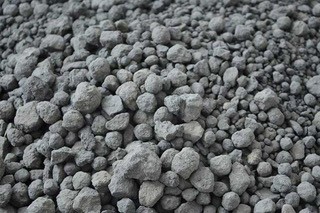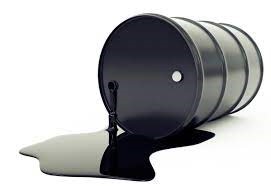Minerals & Commodities

Gypsum
Gypsum is an evaporite mineral most commonly found in layered sedimentary deposits in association with halite, anhydrite, sulfur, calcite, and dolomite. Gypsum (CaSO4.2H2O) is very similar to Anhydrite (CaSO4). The chemical difference is that gypsum contains two waters and anhydrite is without water. Gypsum is the most common sulfate mineral.
Gypsum uses include: manufacture of wallboard, cement, plaster of Paris, soil conditioning, a hardening retarder in portland cement. Varieties of gypsum known as “satin spar” and “alabaster” are used for a variety of ornamental purposes; however, their low hardness limits their durability.

Limestone
Limestone (calcium carbonate CaCO3) is a type of carbonate sedimentary rock which is the main source of the material lime. It is composed mostly of the minerals calcite and aragonite, which are different crystal forms of CaCO3. Limestone forms when these minerals precipitate out of water containing dissolved calcium.
This can take place through both biological and nonbiological processes, though biological processes, such as the accumulation of corals and shells in the sea, have likely been more important for the last 540 million years.[1][2] Limestone often contains fossils which provide scientists with information on ancient environments and on the evolution of life.
Limestone is a raw material that is used globally in a variety of different ways including construction, agriculture and as industrial materials.[102] Limestone is very common in architecture, especially in Europe and North America. Many landmarks across the world, including the Great Pyramid and its associated complex in Giza, Egypt, were made of limestone. So many buildings in Kingston, Ontario, Canada were, and continue to be, constructed from it that it is nicknamed the ‘Limestone City’.[103] Limestone, metamorphosed by heat and pressure produces marble, which has been used for many statues, buildings and stone tabletops.

Clinker
Clinker (or Slag) is a generic name given to waste from industrial processes, particularly those that involve smelting metals, welding, burning fossil fuels and use of a blacksmith’s forge, which commonly causes a large buildup of clinker around the tuyere. Clinker often forms a loose, dark deposit consisting of waste materials such as coke, coal, slag, charcoal, and grit.
Clinker often has a glassy look to it, usually because of the formation of molten silica compounds during processing. Clinker generally is much denser than coke, and, unlike coke, generally contains too little carbon to be of any value as fuel. It is also applied to the by-product of combustion and heating by those who use Anthracite or lignite coal-fired boilers. Clinkers can occur naturally.

Bitumen
Bitumen is manufactured from crude oil. Bitumen is obtained as the last residue in fractional distillation of crude petroleum. Crude petroleum is a mixture of hydrocarbons of different molecular weights. In the petroleum refineries the individual components like LPG, naphtha, Kerosene, Diesel etc. are separated through the process of fractional distillation.
The heaviest material obtained from the fractional distillation process is further treated and blended to make different grades of paving grade bitumen.
Bitumen is a common binder used in road construction, it is Black or Brown in colour and possess water proofing & adhesive properties.
This material is further treated and blended to make different grades of paving grade bitumen. ie Bitumen VG-10, VG-30 and VG-40 and meets IS 73-2006 specification.

